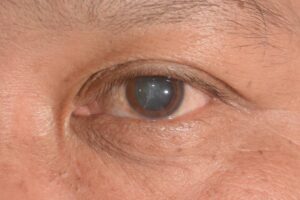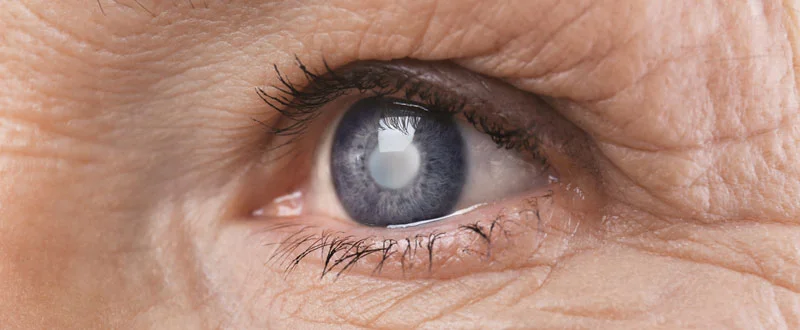If you are a diabetic, there is a good chance you will develop cataracts. Cataracts are a common complication of diabetes, and they can cause significant vision problems if left untreated. In this blog post, we will discuss the causes, symptoms, and treatment of a diabetic cataract. We will also provide tips for preventing these eye complications.
What Is A Diabetic Cataract?
 A diabetic cataract is a complication that can occur in people with diabetes. It is characterized by the formation of cloudy patches on the lens of the eye, which can eventually lead to vision loss. This is a type of cataract that is different from the more common age-related cataract.
A diabetic cataract is a complication that can occur in people with diabetes. It is characterized by the formation of cloudy patches on the lens of the eye, which can eventually lead to vision loss. This is a type of cataract that is different from the more common age-related cataract.
It is estimated that diabetic cataracts account for around 12% of all cases of cataracts worldwide. Many people with diabetes are not aware that they have the condition until it is detected during a routine eye examination. Sometimes, this condition is discovered when a person experiences vision problems.
How Does It Look Like?
A cataract is a clouding of the eye’s lens. The lens is located behind the iris (the colored part of the eye) and the pupil (the black center). It helps to focus light on the retina, which is the back part of the eye that converts light into electrical signals that are sent to the brain and seen as images.
A diabetic cataract is not the same as a cataract caused by aging. It usually forms more slowly and affects both eyes. People with diabetic cataracts often don’t notice any changes in their vision until the cataracts are well-developed.
For example, you may not notice a change in your vision until the cataract makes your vision blurry. Or you may see double images (diplopia) or have trouble with glare, especially at night. It is important to understand that there is a difference between a cataract and diabetic retinopathy. Diabetic retinopathy is a separate eye disease that also can lead to vision loss in people with diabetes.
Therefore, if you are diagnosed with a cataract, it is important to have a comprehensive dilated eye exam so that your eye care professional can check for other eye problems, such as diabetic retinopathy.
What Are The Signs Of Diabetic Cataracts?
The most common sign of a diabetic cataract is blurred vision. You might also notice:
- Cloudy or filmy vision
- Trouble seeing at night
- Trouble seeing colors as vividly as before
- Double vision in one eye
These symptoms can happen slowly. They might not be noticeable at first and can get worse over time. If you have diabetes, it’s important to see your eye doctor regularly. If you avoid or delay treatment, diabetic cataracts can lead to vision loss. Hence, stand up for yourself, and demand regular appointments with the ophthalmologist.
Why Does Diabetes Causes Cataracts?
 Now that we know what diabetic cataracts are, let’s take a closer look at why diabetes causes them.
Now that we know what diabetic cataracts are, let’s take a closer look at why diabetes causes them.
There are two main types of diabetes: type I and type II. Type I diabetes, also known as juvenile-onset or insulin-dependent diabetes, is caused by the body’s inability to produce insulin. Type II diabetes, on the other hand, is caused by the body’s inability to properly use insulin.
Both Type I and Type II diabetes can lead to diabetic cataracts. In fact, diabetic cataracts are one of the most common complications of diabetes. The exact mechanism by which diabetes causes cataracts are not fully understood, but it is thought to be related to changes in the proteins that make up the lens of the eye.
In fact, blood sugar levels play a role in the development of cataracts. People with diabetes have higher than normal levels of sugar in their blood, which can damage proteins in the lens of the eye and lead to cataract formation.
Therefore, diabetic cataract is a complication of diabetes that is caused by changes in the proteins of the eye lens due to high blood sugar levels.
Is Cataract A Side Effect Of Diabetes?
Sometimes, yes. Cataracts are a common complication of diabetes. In fact, people with diabetes are 60 percent more likely to develop cataracts than people without diabetes, according to the studies. It is estimated that by age 80, more than half of all people with diabetes will have cataracts.
Cataracts develop when the protein fibers that make up the lens of your eye become damaged. This damage is caused by changes in blood sugar levels associated with diabetes. Over time, these changes cause the lens to become cloudy, which makes it difficult to see.
So, if you have diabetes, it’s important to have your eyes checked regularly for cataracts. If caught early, cataracts can be treated with surgery. During surgery, the damaged lens is removed and replaced with an artificial lens.
How Can You Treat It?
There are some treatment options to treat diabetic cataracts. One is to have surgery to remove the cloudy lens and replace it with a clear artificial one. This is called cataract surgery, and it’s usually very successful. It’s important to have regular eye exams so that your doctor can catch any changes in your vision early on.
Cataract surgery for diabetic cataracts works the same as it does for non-diabetic cataracts. The surgeon will make a small incision in your eye and then remove the cloudy lens. They will then replace it with a clear artificial one. This surgery is usually very successful, but it’s important to have regular eye exams so that your doctor can catch any changes in your vision early on.
In addition, there are some things you can do to help prevent diabetic cataracts or slow their progression.
- Maintain control of your blood sugar levels.
- Have regular comprehensive dilated eye exams.
- Follow your healthcare provider’s recommendations for the treatment of diabetes and its complications.
- Wear sunglasses and a hat when outdoors to protect your eyes from the sun’s ultraviolet rays.
- Quit smoking.
If you have diabetic cataracts, talk to your doctor about your treatment options. There are things you can do to help prevent them or slow their progression. With regular eye exams and good blood sugar control, you can keep your vision clear for many years to come.
Is Diabetic Cataract Curable?
 Well, this is the most popular question we get and the answer is, Yes! Diabetic Cataracts can be cured with surgery. The earlier it is caught, the better. If you wait too long, the cataract will harden and become harder to remove. Two types of surgery can be done: Phacoemulsification and Extracapsular.
Well, this is the most popular question we get and the answer is, Yes! Diabetic Cataracts can be cured with surgery. The earlier it is caught, the better. If you wait too long, the cataract will harden and become harder to remove. Two types of surgery can be done: Phacoemulsification and Extracapsular.
- Phacoemulsification is the most common type of surgery and is done by breaking up the cataract using sound waves and then suctioning it out. This type of surgery has a quicker recovery time.
- Extracapsular is the second type of surgery which involves making a larger incision in the eye to remove the cataract. This type of surgery has a longer recovery time but may be necessary if the cataract is large or hard.
After the surgery, you will need to take care of your eye by using eye drops and avoiding rubbing or touching your eye. You should also avoid strenuous activity and sunlight for at least a week.
If you have diabetes, it is important to keep your blood sugar levels under control to prevent diabetic cataracts from developing or getting worse. You should also have regular eye exams so that any changes in your vision can be detected early.
Overall, the cure is possible with the right tips and treatments. Do not let this problem get in your way of living a happy and healthy life!
Conclusion
In conclusion, diabetic cataract is a serious complication that can lead to vision loss. Early diagnosis and treatment are essential to preserving your vision. Diabetes can be controlled through diet, exercise, and medication. If you have diabetes, it is important to have regular eye exams to check for cataracts and other complications.
While surgery can treat cataracts, diabetes cannot be cured until you get your blood sugar under control. With proper treatment, you can live a long and healthy life with diabetes.
For more information and guidance, please contact Eye Mantra. At EyeMantra we have a team of experienced eye surgeons, who will be happy to answer any questions on cataract surgery, cataract surgery cost, cataract lens cost for different cataract surgery types- Phacoemulsification, MICS & Femto Laser Cataract. Call us at +91-9711116605 or email at [email protected] for inquiries.


